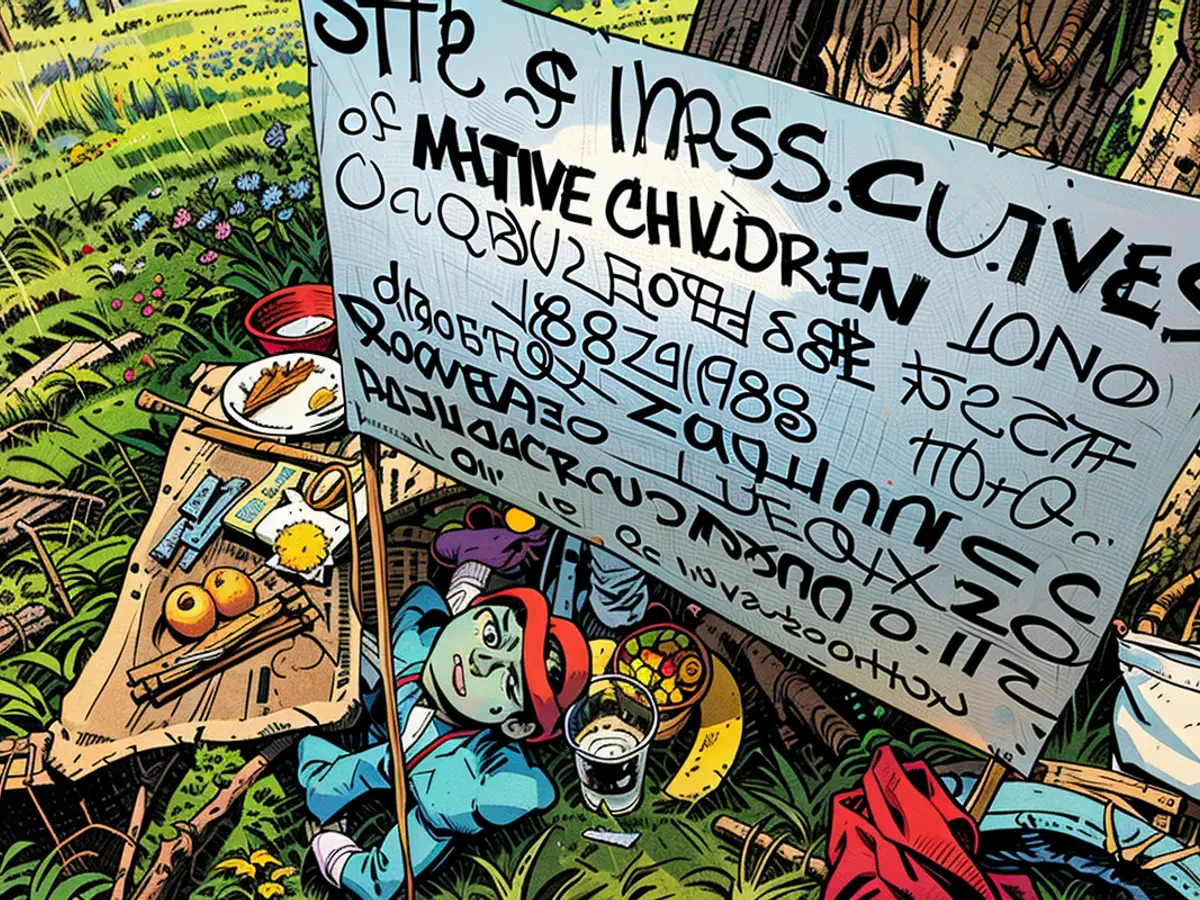Investigation finds at least 973 Native American children died in US government boarding schools
The investigation commissioned by Interior Secretary Deb Haaland found marked and unmarked graves at 65 of the more than 400 US boarding schools that were established to forcibly assimilate Native American children into White society. The findings don’t specify how each child died, but the causes of death included sickness, accidents and abuse during a 150-year period that ended in 1969, officials said.
The findings follow a series of listening sessions across the US over the past two years in which dozens of former students recounted the harsh and often degrading treatment they endured while separated from their families.
“The federal government — facilitated by the Department I lead — took deliberate and strategic actions through federal Indian boarding school policies to isolate children from their families, deny them their identities, and steal from them the languages, cultures and connections that are foundational to Native people,” Haaland, a member of the Laguna Pueblo tribe in New Mexico and the country’s first Native American Cabinet secretary, said in a news release Tuesday.
In an initial report released in 2022, officials estimated that more than 500 children died at the schools. The federal government passed laws and policies in 1819 to support the schools, the last of which were still operating in the 1960s.
The schools gave Native American kids English names, put them through military drills and forced them to perform manual labor, such as farming, brick-making and working on the railroad, officials said.
Former students shared tearful recollections of their experience during listening sessions in Oklahoma, South Dakota, Michigan, Arizona, Alaska and other states. They talked about being punished for speaking their native language, getting locked in basements, and having their hair cut to stamp out their identities. They were sometimes subjected to solitary confinement, beatings and the withholding of food. Many left the schools with only basic vocational skills that gave them few job prospects.
Donovan Archambault, 85, of the Fort Belknap Indian Reservation in Montana, said he was sent away to boarding schools beginning at age 11 and was mistreated, forced to cut his hair and prevented from speaking his native language. He said he drank heavily before turning his life around more than two decades later, and never discussed his school days with his children until he wrote a book about the experience several years ago.
“An apology is needed. They should apologize,” Archambault told The Associated Press by phone Tuesday. “But there also needs to be a broader education about what happened to us. To me, it’s part of a forgotten history.”
The new report doesn’t specify who should issue the apology on behalf of the federal government, saying only that it should be issued through “appropriate means and officials to demonstrate that it is made on behalf of the people of the United States and be accompanied by bold and actionable policies.”
Interior Department officials also recommended that the government invest in programs that could help Native American communities heal from the traumas caused by boarding schools. That includes money for education, violence prevention and the revitalization of indigenous languages. Spending on those efforts should be on a scale proportional to the $23 billion in inflation adjusted spending on the schools, agency officials said.
The schools, similar institutions and related assimilation programs were funded by $23.3 billion in inflation-adjusted federal spending, officials determined. Religious and private institutions that ran many of the institutions received federal money as partners in the campaign to “civilize” Indigenous students, according to the new report.
By 1926, more than 80% of Indigenous school-age children — some 60,000 children — were attending boarding schools that were run either by the federal government or religious organizations, according to the National Native American Boarding School Healing Coalition.
The Minnesota-based group has tallied more than 100 additional schools not on the government list that were run by churches and with no evidence of federal support.
US Catholic bishops in June apologized for the church’s role in the trauma the children experienced. And in 2022, Pope Francis apologized for the Catholic Church’s cooperation with boarding schools in Canada. He said the forced assimilation of Native peoples into Christian society destroyed their cultures, severed families and marginalized generations.
Legislation pending before Congress would establish a “Truth and Healing Commission” to document and acknowledge past injustices related to boarding schools. The measure is sponsored in the Senate by Democrat Elizabeth Warren of Massachusetts and backed by Republican Lisa Murkowski of Alaska.
“It is time the federal government takes responsibility for its harmful policies,” Murkowski said on the Senate floor last week. “Our Commission will provide a Native-led process for communities to share the stories, share the truth, and pursue healing.”
The investigation's findings resonated deeply with many US citizens, prompting them to call for an apology and reconciliation. As a result, some US organizations and religious figures, such as the US Catholic bishops, have begun acknowledging and apologizing for their roles in the trauma inflicted on these children.
Usingly, the new report recommends significant investments in programs that can help Native American communities heal from the traumas caused by boarding schools. This includes funds for education, violence prevention, and revitalizing indigenous languages, with spending on these efforts proportionate to the inflation-adjusted $23 billion spent on the schools over the years.








